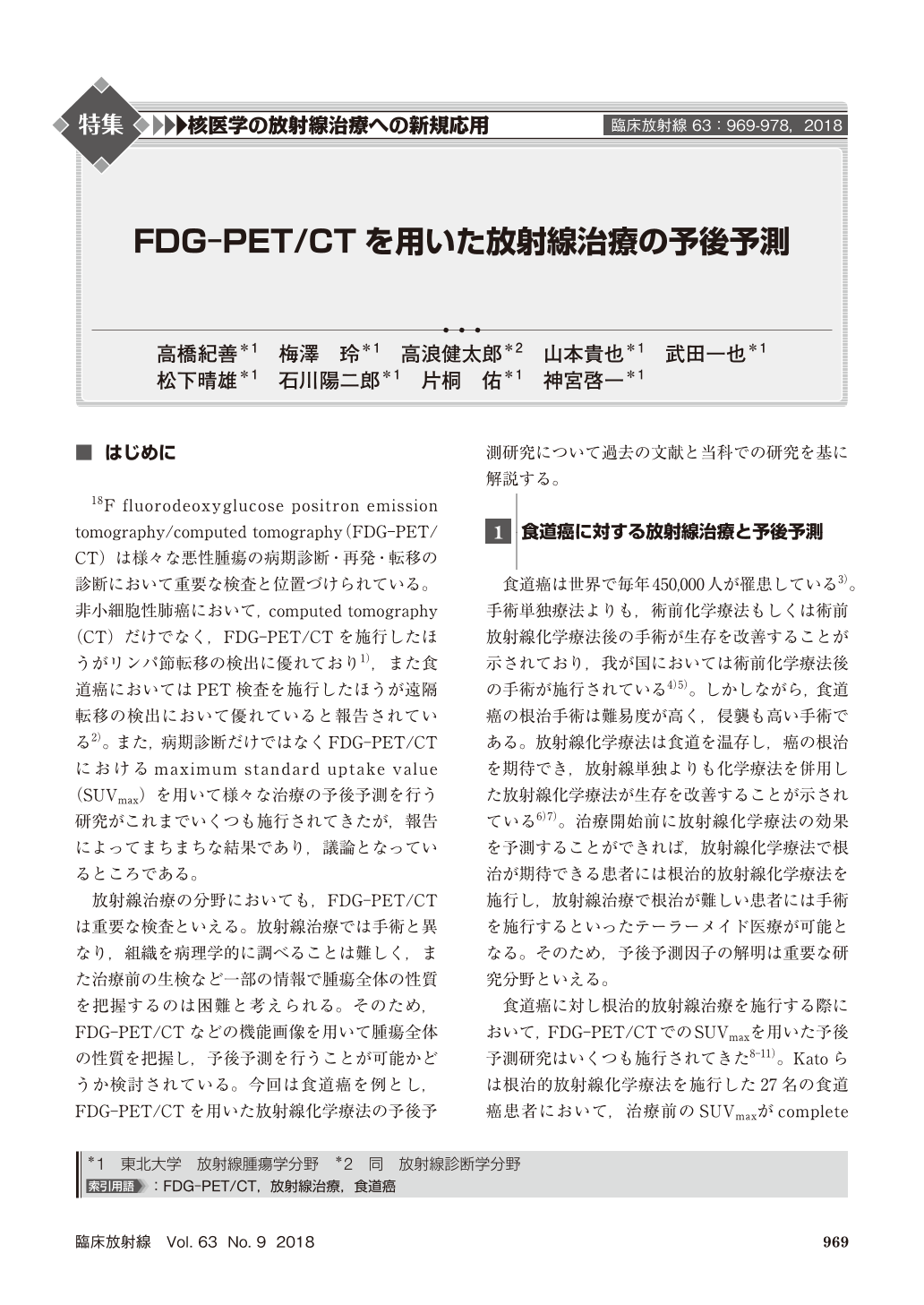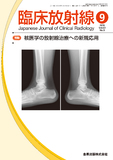Japanese
English
- 有料閲覧
- Abstract 文献概要
- 1ページ目 Look Inside
- 参考文献 Reference
18F fluorodeoxyglucose positron emission tomography/computed tomography(FDG-PET/CT)は様々な悪性腫瘍の病期診断・再発・転移の診断において重要な検査と位置づけられている。非小細胞性肺癌において,computed tomography(CT)だけでなく,FDG-PET/CTを施行したほうがリンパ節転移の検出に優れており1),また食道癌においてはPET検査を施行したほうが遠隔転移の検出において優れていると報告されている2)。また,病期診断だけではなくFDG-PET/CTにおけるmaximum standard uptake value(SUVmax)を用いて様々な治療の予後予測を行う研究がこれまでいくつも施行されてきたが,報告によってまちまちな結果であり,議論となっているところである。
FDG-PET/CT is an important method for diagnosis of malignant tumors. There have been several studies on prediction of outcomes of treatment by SUV max. However, it is a controversial whether SUV max is a predictor of outcomes of treatment. Other FDG-PET/CT parameters including metabolic tumor volume(MTV)and total lesion glycolysis(TLG)have been reported. They reflect tumor volume and FDG uptake. We reported that MTV and TLG were better predictors of outcomes than SUV max in patients with esophageal cancer who were treated with chemoradiotherapy. Much interest has recently been shown in texture analysis. Texture analysis is a method for evaluating heterogeneity, such as fine, coarse and smooth, in an image. In this report, we introduce several studies about MTV and TLG in esophageal cancer and describe the method of texture analysis in detail.

Copyright © 2018, KANEHARA SHUPPAN Co.LTD. All rights reserved.


